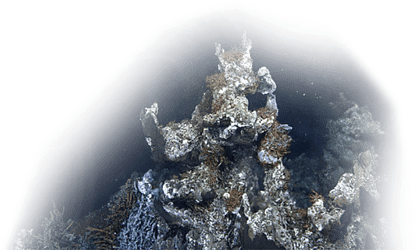One of Ocean Networks Canada’s seafloor observatory video cameras has captured a natural phenomenon in the Northeast Pacific Ocean: Hundreds (if not thousands) of crabs crawling over the seabed amid strong currents, almost one thousand metres below the surface at Barkley Canyon.
The Ocean Networks Canada (ONC) cabled observatories located off Canada’s west coast provide a unique portal to the ocean via high resolution cameras streaming the undersea world in realtime to researchers around the world and anyone interested in life beneath the surface of the sea.
The keen eye of a watchful citizen scientist witnessed this crab migration one February afternoon, as it unfolded, in front of the live camera. What is even more extraordinary is our ocean citizen scientist lives deep in the American heartland, a thousand miles from the ocean. Michael, a post-office worker from Minnesota, alerted ONC’s science team via email and asked what might have caused this abundance of crabs.
According to ONC staff scientist and benthic ecologist Fabio De Leo, recent scientific papers published by the ONC research community (including Doya et al 2013) describe periods in Barkley Canyon when crabs are more abundant, and even dominate the rest of the fauna. But never before had we witnessed such extremely high numbers of one particular species: the grooved Tanner crab, or Chionoecetes tanneri.
Unravelling the mystery
ONC researchers began pondering what may have caused such a large crab fest. Could the crabs be fleeing an earthquake or underwater landslide? Barkley Canyon is an actively eroding underwater canyon where underwater landslides occur. A closer look at the video reveals that the crabs moved in a single direction, up the canyon toward shallower water depths. This unidirectional movement suggests that this is not a panic response to a sudden event, where the crabs would likely flee in multiple directions, but rather a mass migration.
A quick look at data from ONC instruments in Barkley Canyon shows little change in environmental factors such as bottom temperature, currents and dissolved oxygen during this migration time. So, we can safely conclude that the mass migration was not being triggered by environmental change.
Are the crabs responding to an internal stimulus to move to shallower depths? After viewing the video sequence University of Victoria researcher Verena Tunnicliffe suggested a possible link to the crab’s annual reproductive cycle.
According to Fisheries and Oceans Canada (DFO), in March and April, female Tanner crabs, which live at deeper water depths than males, “move shallower for the purpose of egg release and mating.”
Connecting citizen scientists with the ocean science community
Much of our knowledge of Tanner crab biology comes from analysis of crabs caught in trap and trawl surveys at different depths and at different times of year. Direct observations of these crabs and other deep-water species are rare. Long-term video monitoring from cabled observatories such as ONC provides ocean scientists with a powerful new tool to study the movements of species as they migrate to and from deep ocean depths. Such information is important for biodiversity conservation and the sustainable management of deep sea fisheries.
This single observation by a citizen scientist underlines the power of cabled observatories to reveal previously unknown or suspected habits of deep sea creatures.
Ocean Networks Canada is delighted to connect citizen scientists with the science community through its network of live seafloor cameras. And for his timely and remarkable observation of Tanner crab migration, our thanks go to Michael in Minnesota, who demonstrated that even when access to the ocean is virtual, ocean discovery is still possible.
Related links to explore:
- Locate the Tanner crab sighting at POD 1, Barkley Canyon Observatory Site
- Check out ONC’s extensive collection of Multimedia
- Fisheries and Oceans Canada (DFO) describes crab species assessed at the Pacific Biological Station, including the grooved Tanner crab
For further information about the capabilities of ONC cameras and infrastructure for deep-sea research, contact Fabio C. De Leo, PhD, ONC Staff Scientist, Benthic Ecology
